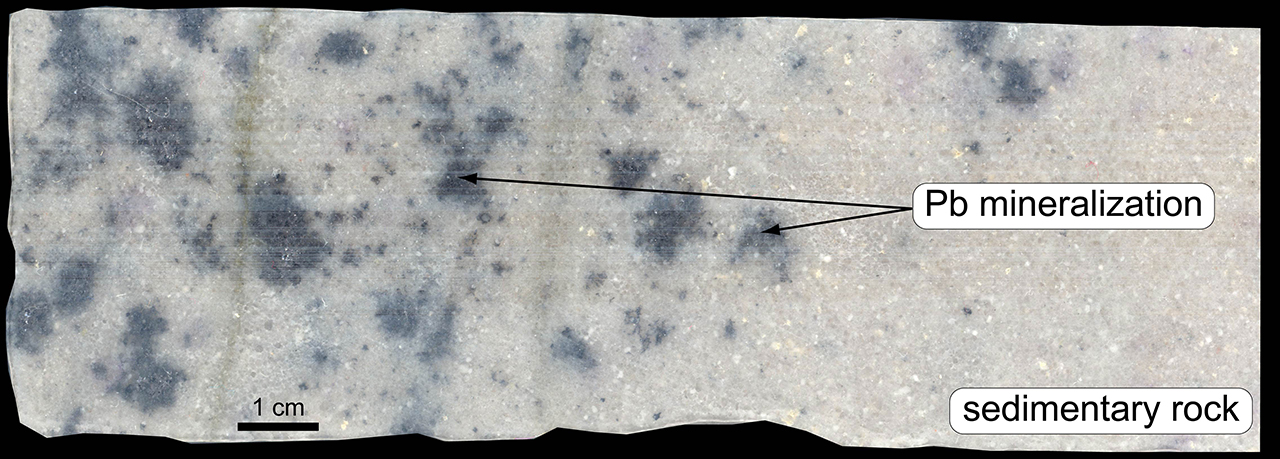When nature turns petroleum into a resource for essential metals
Base metals such as zinc (Zn) and lead (Pb) are essential elements for our economy. They are most commonly used for galvanizing protection for steel and the manufacture of batteries. Both metals are mostly mined from deposits hosted in ancient sedimentary rock formations.
A consensus for the formation of a certain type of Pb-Zn sulphide deposits emerged and was widely accepted by the scientific community toward the end of the 20th century. A new study, which reshuffles the cards and challenges the accepted paradigm, has been published in Scientific Reports by Saintilan (formerly at the University of Geneva and presently Swiss National Science Foundation Ambizione fellow at ETH Zurich) and colleagues and collaborators from the University of Geneva, the University of Lausanne, ETH Zurich (Professor Cyril Chelle-Michou, Institute of Geochemistry and Petrology) and the Geological Survey of Sweden (SGU).
It has been commonly thought that Pb-Zn deposits form when metal-rich saline waters flowing into a rock formation several kilometres below the surface vigorously react with a sulphur-rich (“rotten-egg-smelling”) hydrocarbon reservoir in the sedimentary rocks. In this model, the accepted source of the metals are the surrounding basement rocks. Yet, the new study reports for the first time that up to 60 % of metals in a Pb-Zn deposit may actually originate from the hydrocarbon reservoirs themselves.
Whilst refining the model for the formation of the Laisvall deposit in northern Sweden, which was the largest European lead mine in the course of the 20th century, the researchers noticed a peculiar chemical signature in the isotopes of lead contained in the sulphide minerals. The new data did not entirely fit the model for the formation of the Laisvall Pb-Zn deposit. The lead isotopic signature, observed by the research team, indicated that the source of the metals could not solely be derived from the local Precambrian granites and gneisses, but, in fact, a significant fraction of the metals appeared to have been sourced from a much younger rock unit.
Where did the metals come from?
The Swiss research team determined that half the amount of lead in the Laisvall deposit was actually derived from a known hydrocarbon source rock rich in metals: the Alum Shale. As hydrocarbons were being produced, they scavenged a substantial part of the metals from the shale source rock and carried them to the site of mineralization. During alteration of the hydrocarbons, those metals alongside some metals derived from the basement rocks by the saline waters were fixed as Pb-Zn sulphide minerals in the Laisvall deposit.
This discovery invites geochemists to have a fresh look at both mineral and hydrocarbon deposits in sedimentary rocks. Besides lead and zinc, other critical metals are known to be particularly enriched in petroleum, such as nickel, cobalt, and copper. Therefore, the new discovery from this study may lead to new exploration tools and strategies for discovering these economically essential metals.
Reference
Saintilan et al.: Petroleum as source and carrier of metals in epigenetic sediment-hosted mineralization. Scientific Reports, doi: external page10.1038/s41598-019-44770-7

